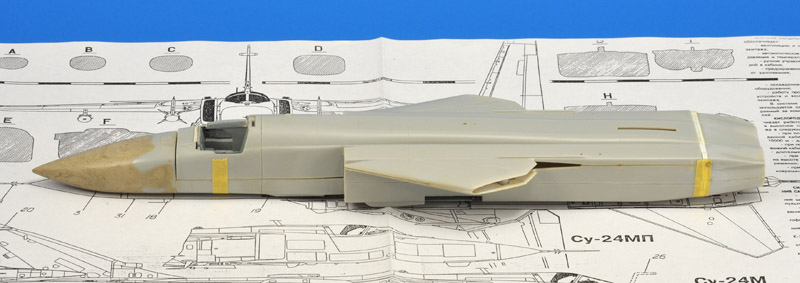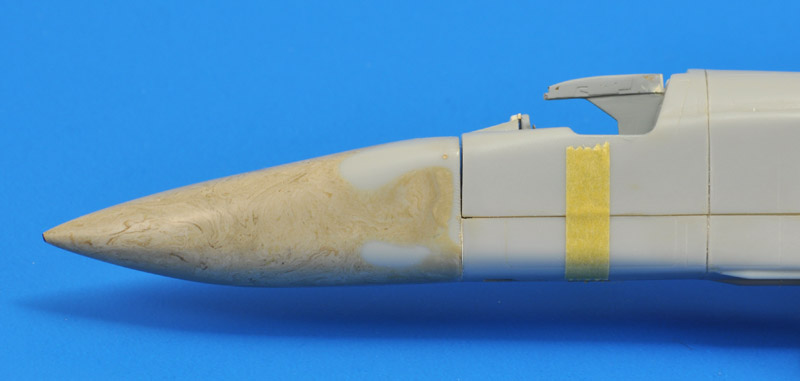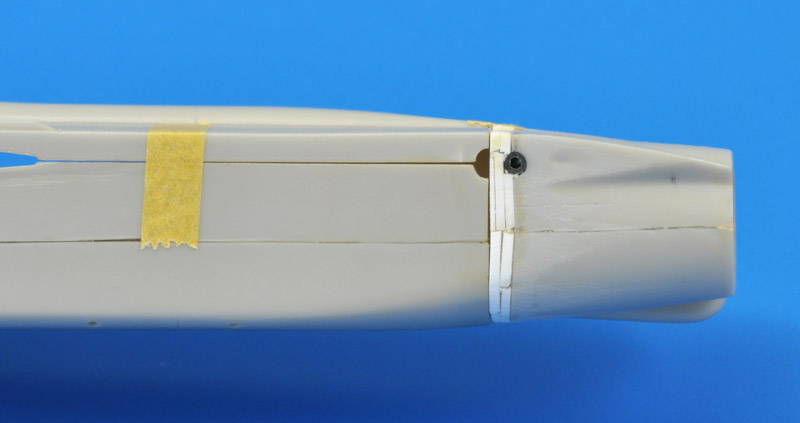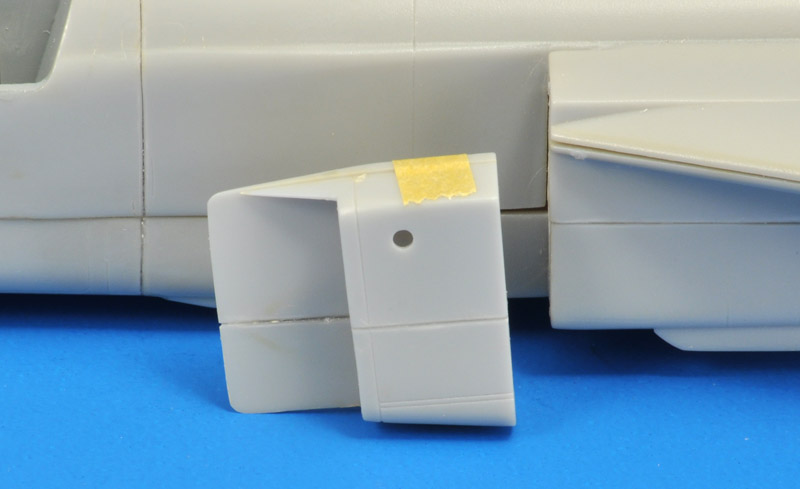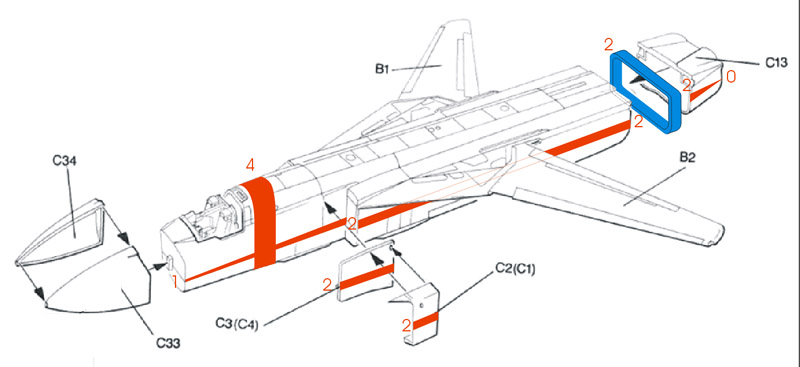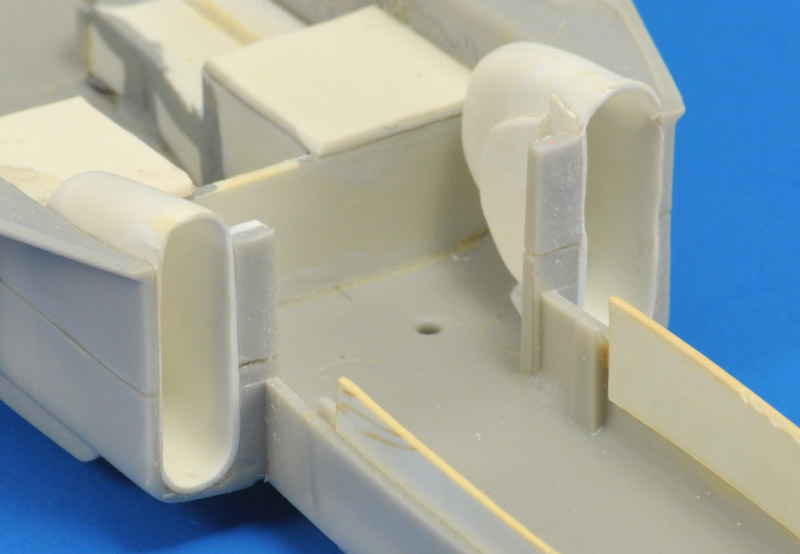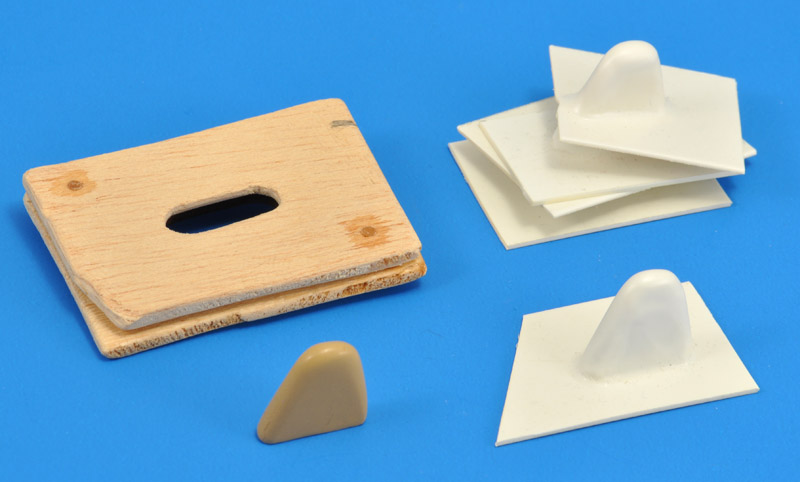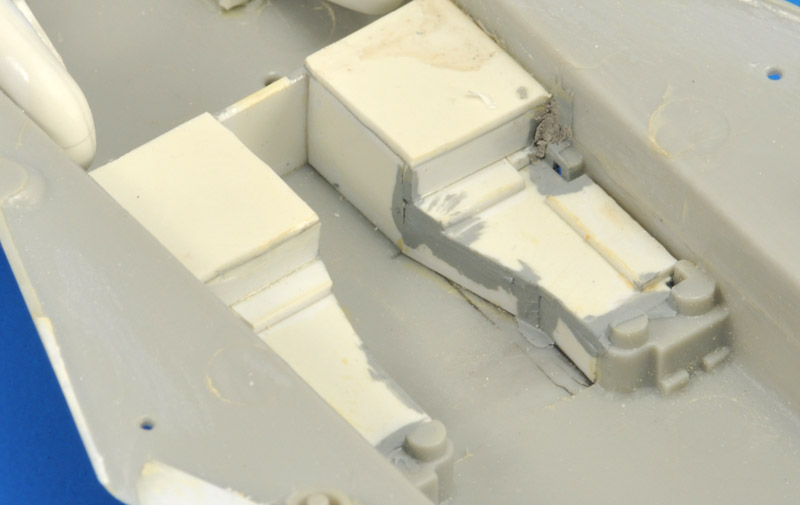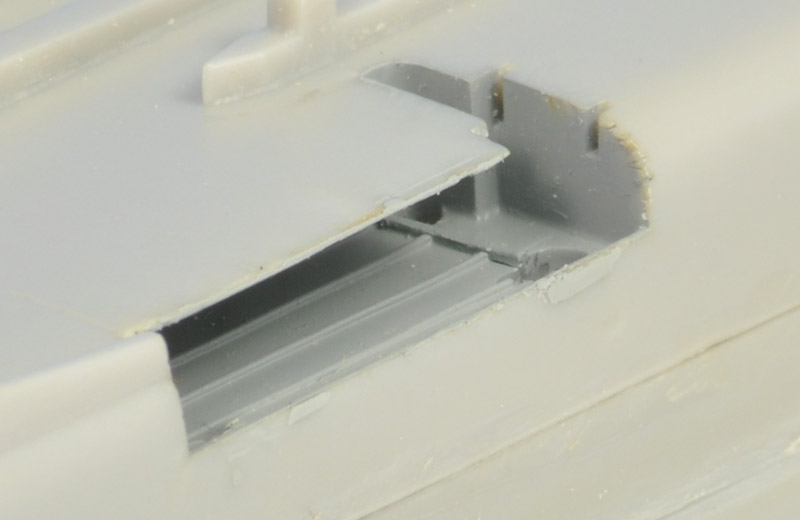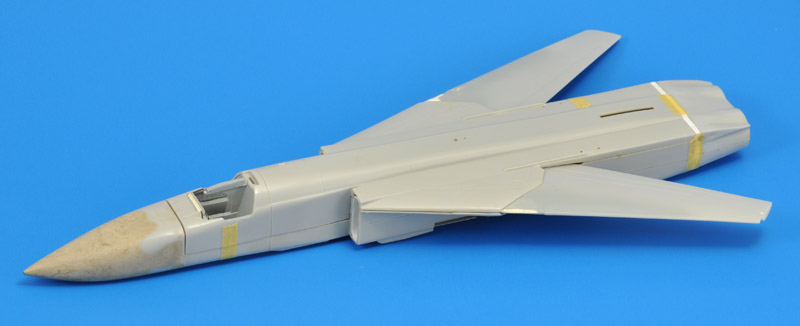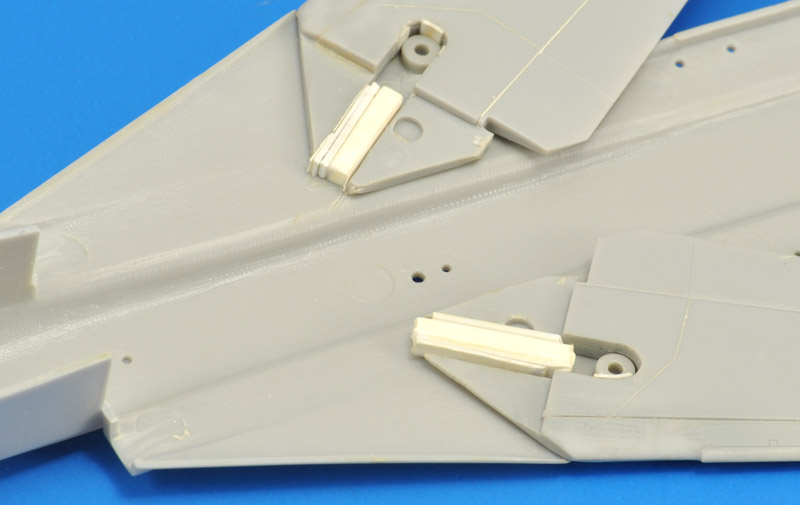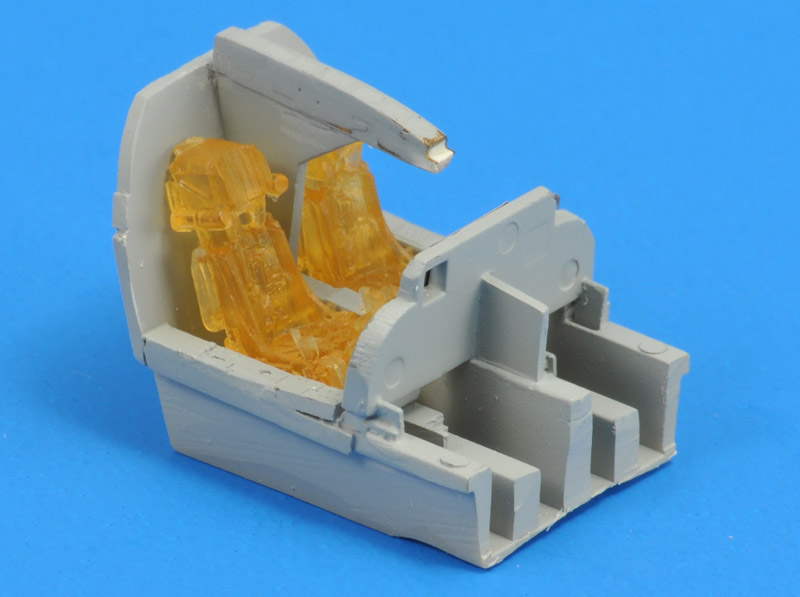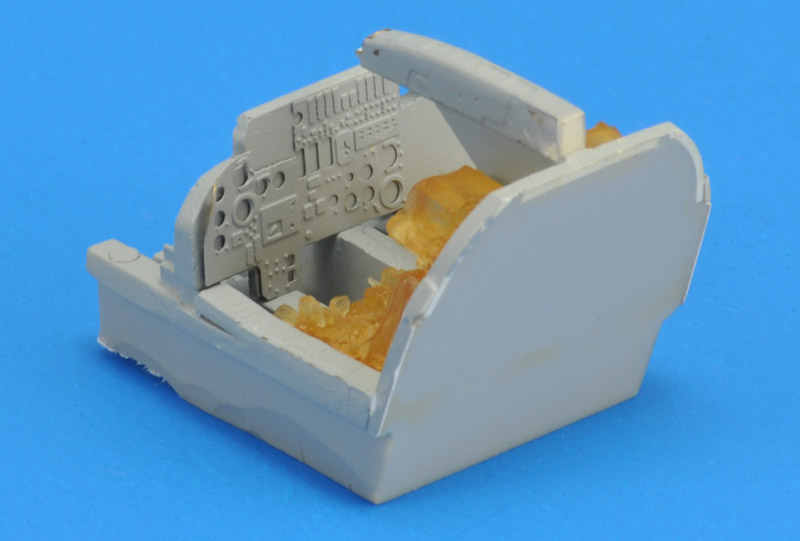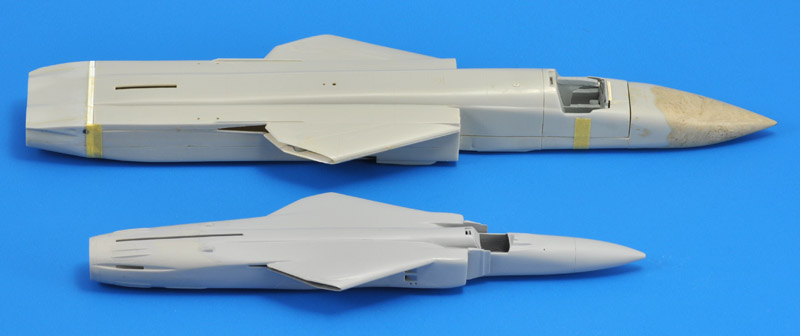Italeri (Dragon) 1/72 Sukhoi Su 24MR Fencer-E
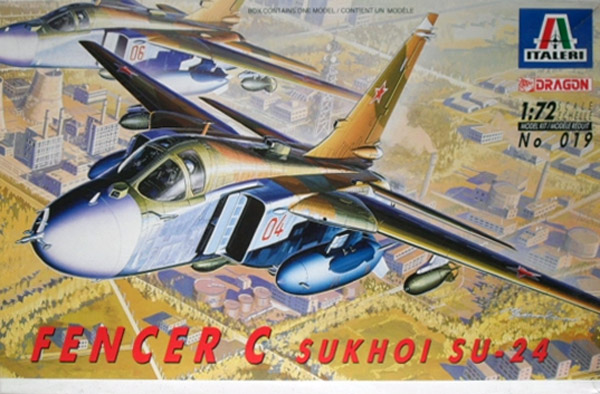
| Ever since I saw Fencers in East Germany (Fencer-E and F) and Poland (Fencer-B, C and D) this is one of my favorite Soviet aircraft. Dragon produced a Fencer kit in two versions, the short-nosed Fencer-B/C and the long-nosed Fencer-D. Italeri markets the short-nose version. I bought the Italeri kit to build a Fencer-B or C as I had seen in Poland, and planned to later buy the Dragon long-nosed Fencer-D to convert it into a Fencer-E, which is the version I like best.
The construction of this model was stopped in 2003. In 2001 I first heard rumors of a new Fencer model coming from Russia, and in October 2003 it reached Europe. It is produced by 'Strim' or 'Stream', and according to first reports, the quality is quite good, at least a lot better than the Dragon kit. Because the Dragon model will require a great deal of work to bring it up to standards, starting over with the new kit is most likely much wiser. Therefore, this project is terminated. I had a lot of fun so far, but I also learned that Dragon models are not the best in the world. I don't understand all the raving about them! This partial build report will remain on the site in its original form for some time though. |
